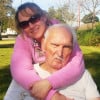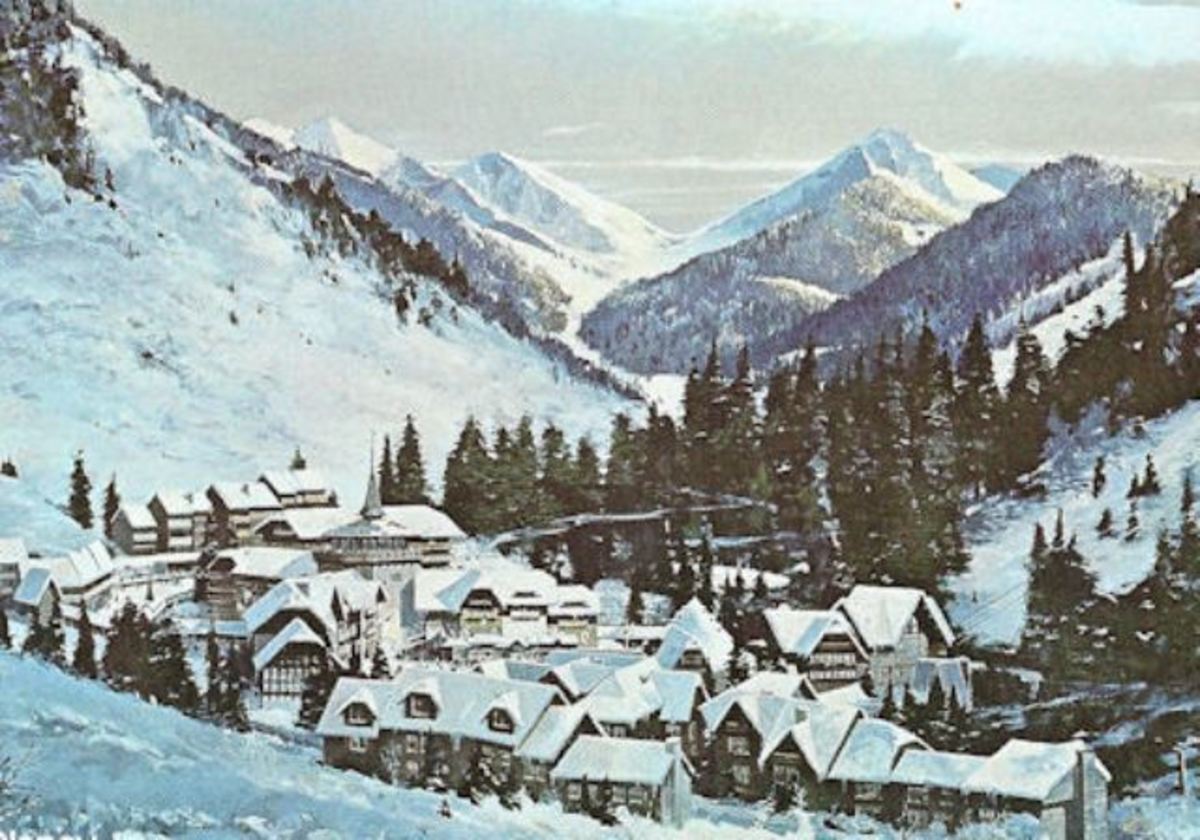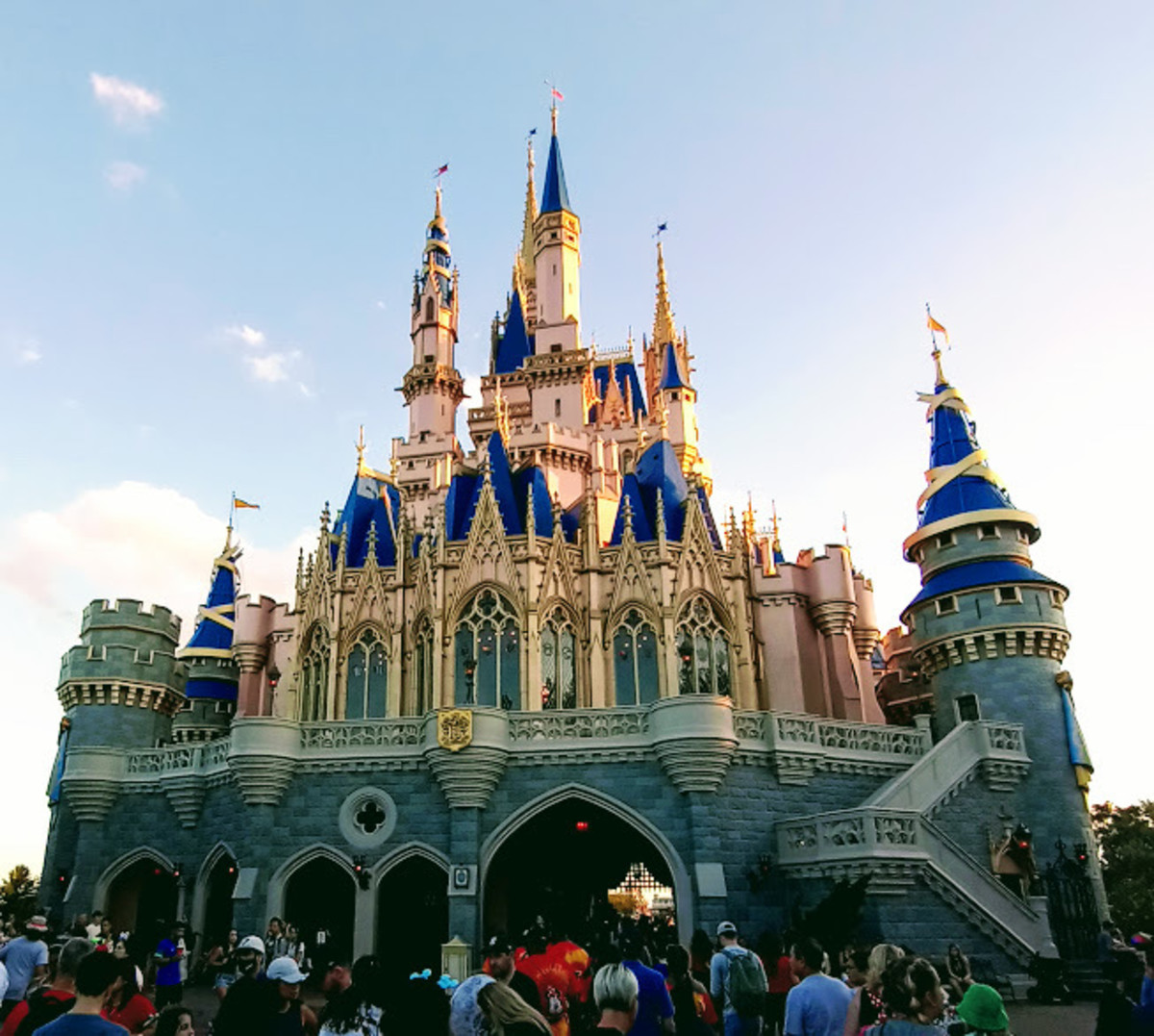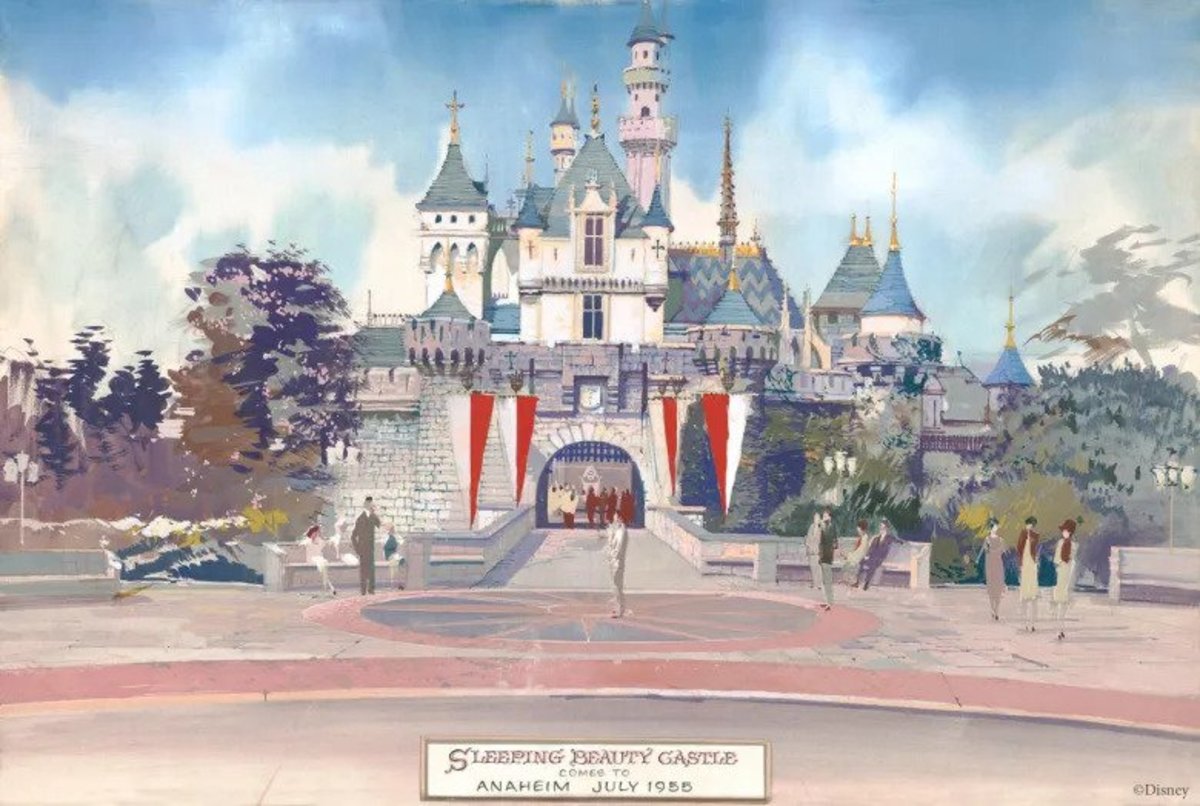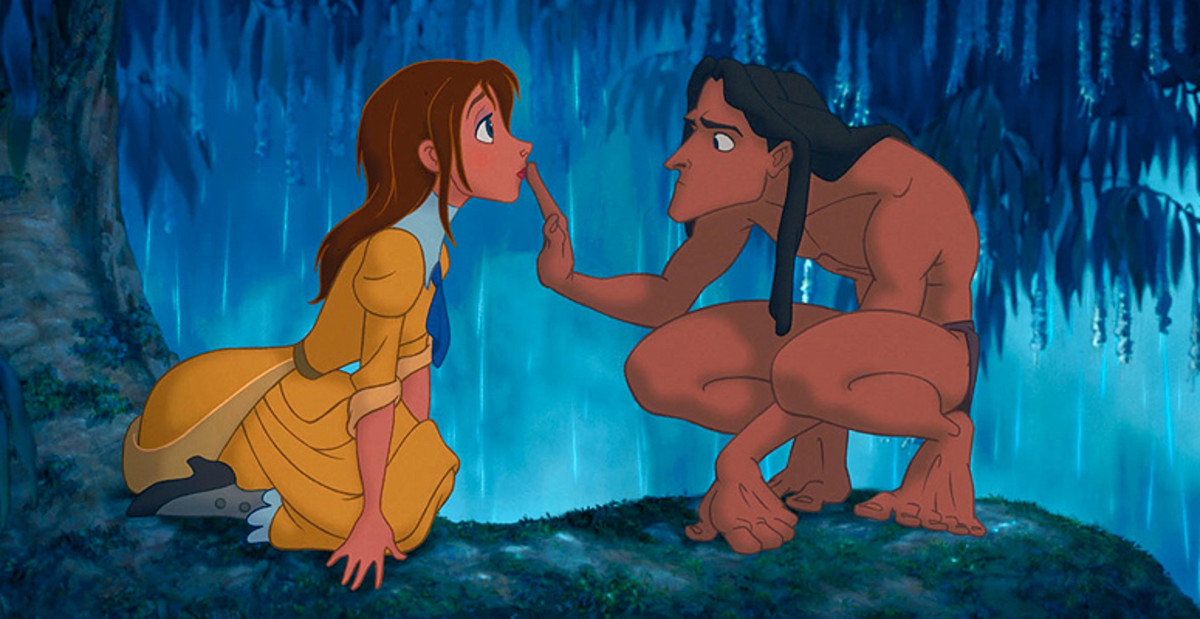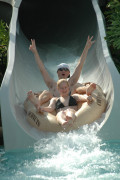Retired or Extinct Disneyland Rides, Exhibits and Attractions I Miss Most - Circarama to Circlevision 1955-1997
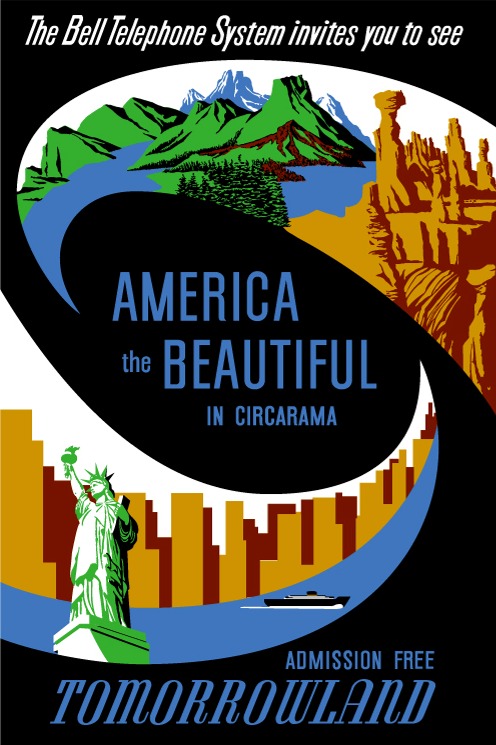
For forty-two years, It stood on the far left-hand corner at the juncture that connected Main Street U.S.A., to Tomorrowland, and Adventureland. During it's nearly half-century reign, Circle-Vision 360, played host to six different shows, and was sponsored by such Wall Street giants as, American Motors, AT&T, and Delta Airlines.
Educational, and family friendly, it was an attraction that was suitable for everyone in my family, from my grandfather who had survived several heart attacks, and had a pace-maker, to my baby sister, and therefore, it was an attraction that was rarely, if ever, missed by my family during my childhood trips to the Magic Kingdom. Even as a teenager, unencumbered by the presence of my parents and grandparents, it was still a great place to take a break and cool off on a hot afternoon, and as I would later find out when my own nieces, nephews, and children came a long, a great place to coax a worn-out toddler into taking a much needed and unwanted afternoon nap.
More than the sentimental hot-spot of a life-long Disneyland lover, the method of filming its shows was a technique that having been refined by the Walt Disney Company, would go on to revolutionize the modern day film industry, making it a living piece of movie making history.
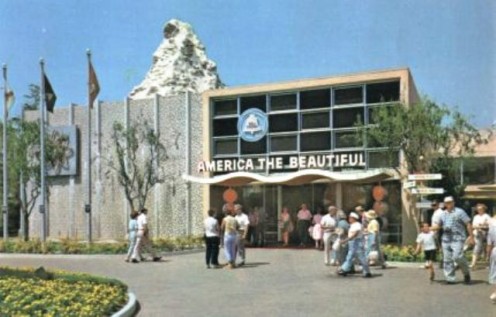
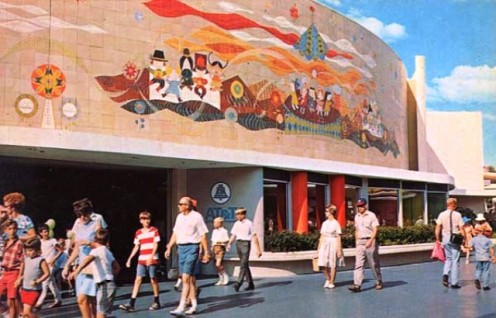
Technological Advances and Award Winner from The Walt Disney Company
The idea of making a 360 degree film was not a new one, in fact, the earliest version of such a film was debuted in 1901 at the Paris World's Fair; But it was The Walt Disney Company who would ultimately refine the technique and give it the name Circarama.
It is said that after having viewed the new process Cinerama, at the Pantages Theater in Los Angeles, Walt Disney was inspired to wonder why, if they could show a movie on three screens simultaneously, couldn't they extend it so that the screens would surround the entire audience? He called in Disney legend Roger Broggie, and special effects expert, Eustace Lycett to explore the possibility.
The original Circarama movie, A Tour of the West, was shot by Paul Mantz and Frank Tallman of Tallmantz Aviation. They shot the film with eleven 16mm Cine Kodak Special cameras, whose drive shafts were mechanically linked together by a singles sprocket chain. They used a tachometer to control the shooting speed, which was at a rate of between eight and twenty-four frames per second. To cover 360 degrees of arc, the cameras were mounted onto a circular platform. The platform was then strapped to the roof of the car, in this case an American Motors Rambler. The push-button controls that were used to start, stop, and control the camera function were mounted into the dashboard of the car.
In the original design concept, the plan for the Tomorrowland's Circarama theater had been for there to be a center gondola from which the projectors would have projected on to twelve screens, but the Disney Imagineeers would soon find that if they used an odd number of screens with small spaces left between them, they could place the projectors in the gaps, and the projectors could then project the images across the space to the screen that was their opposite, thus freeing up the center space, and eliminating any distortion.
The process developed by The Walt Disney Company was so unique, that in July of 1956, on the one year anniversary of Disneyland, The Disney Corporation, filed for a joint patent on behalf of Disney legend UB Iwerks, and Walt Disney. The patent was granted four years later on June 28, 1960.
In that same year, UB Iwerks, for his outstanding contributions to the technology in equipment and processes for the making of color motion pictures, was honored by the Society of Motion Picture and Television Engineers, (SMPTE), with the Herbert T. Kalmus Gold Medal. These achievements included the following; Creating the Double Header Optical Printer , The Color Correction Masking Process, The Xerographic Process of Animation, and The 360 Degree Circarama System.
American Motors Corporation Official Press Release
"This combination of photographic skills and entertainment talents promises an unusual spectacle for visitors to Disneyland. We're happy to have a part to play in making Circarama possible. As it represents added pleasure and value for the public, sponsorship of the Circarama is another forward step in our program to make American Motors mean more for Americans."
George Romeny, President, American Motors Corporation, -Official Press Release regarding the upcoming opening of Circarama, June 27, 1955
Circarama, USA
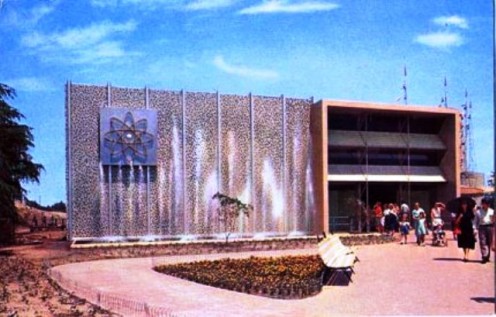
Circarama Press Review From the Los Angeles Times
"Spectators located on a so-called island in the center of the stage where Circarama was shown at the Disney plant were able to look out in every direction and observe the view of the Grand Canyon, Monumnet Valley, Las Vegas, Balboa Bay, and even the heavily traveled streets of Los Angeles. As one observer said, "this new dimension makes it impossible for the spectator to escape the cowboys and Indians, no matter which way he looks." "
-Los Angeles Times Review of Circarama, Following Disney Press Preview Party, June 1955
Circarama, USA 1955-1967
"An advanced motion picture development, Circarama, consisting of a continuous image focused on a 360 degree screen, will be introduced at Disneyland Park on July 17 by American Motors Corporation, producer of Hudson, Nash, and Rambler automobiles and Kelvinator appliances."
-Disney Press Release, June 27, 1955
Sponsored by the American Motors Corporation,(AMC), (which having been formed by the January 14, 1954 merger of the Nash-Kelvinator Corporation and the Hudson Motor Car Company, was itself a fledgling company), Walt Disney's more commonly known, "Circle-Vision 360 ," was originally given the name Circarama U.S.A. This name was not only a reflection of the relatively new theater process of the time, known as Cinerama, in which movies such as "How the West was Won," were being shown not on one, but on three large synchronized screens, but also to show the attraction's association with its sponsor AMC, and the automobile industry. A theroy bolstered by the unique lettering of the original sign outside of the theater, which had all of the letters of the word in large bold black letters, except for the middle three, where the word "CAR" was all in red.
Circarama, U.S.A . and it's original eleven minute movie, " A Tour of The West," opened to rave reviews generated by the press preview party that was held in June of 1955. Functioning properly, and without any glitches, Circarama, U.S.A., was one of only a handful of the original Disneyland attractions that managed to make it through opening day unscathed by what at the time appeared to be some sort of opening day disaster curse.
The eleven minute show ran three times per hour, with an eight minute intermission between each show, allowing audiences to be ushered into and out of the theater.
Inside the circular theater, the audience stood, without lean rails, in the center of an asphalt paved circle that measured approximately forty feet in diameter, and was bordered by a perimeter made up of American Motors cars and Kelvinator appliances.
The audience, was encircled by eleven eight foot tall screens which were mounted eight feet off of the ground, giving the viewer a sense of movement, and leading to the simulated sensation that they were being whisked off on a whirlwind excursion that began on Sunset Boulevard in front of the Beverly Hills Hotel. The experience continued with a high-speed joyride down Wilshire Boulevard, and a tour through the Los Angeles area freeway system, before heading off toward the majestic scenery of Monument Valley, a tour of the breathtaking Grand Canyon, a poolside view of Las Vegas, and a high speed boat ride through Newport Harbor.
Accustomed to the usual movie theater experience, in which the viewer would typically sit in front of the centrally located screen and look straight ahead, the audience had a bit of trouble adjusting to the idea of watching several screens at the same time, but before long, they would settle in to the sense of being like a passenger who had been brought along for the ride, and like all passengers, begin to take in the scenery to the right, left, and even to the rear.
To help this process along, and thus ensure that the guests enjoyed the full scope of the film, the Disney Imagineering Team developed some subtle, but ingenious, audience manipulation tricks. An example of one such manuver takes place during the Las Vegas poolside scenes, and employs the help of two young women in form-fitting swimsuits. As they entered the scene together, the two bathing beauties appeared to be walking straight toward the audience. The two would then suddenly split off so that each was striding confidently down their own path on either side of the audience, until the met once again in the rear.
America the Beautiful (Part 1)
America the Beautiful (Part 2)
Circle-Vision 360 1967 - 1997
"Disneyland's New Tomorrowland, Where The Dreams Of The Future Are Reality Today"
-Bell Telephone New Circle-Vision Film
"Expanding and re-developing what was one of the most popular shows in Disneyland the past twelve years, The Bell system announces the completion in Tomorrowland this summer of an entirely new exhibit pavilion and an all new "America the Beautiful presentation."
-Vacationland Magazine, Summer 1967
As 1966 drew to a close, so did American Motor Corporation's sponsorship of Circarama. A new benefactor was found in telephone giant, Bell Systems; but a change in sponsorship would not be the only transition in store for the popular Disneyland show that year. Closed as part of the $100 million dollar renovation of Tomorrowland, when the popular attraction re-opened its doors, it would have a new name, a new 34,000 square foot, state-of-the-art, exhibition pavilion, and it would feature a new film as well.
"Disneyland's New Tomorrowland
WHERE THE DREAMS OF THE FUTURE ARE REALITY TODAY
Bell Telephone New Circle-Vision Film
Through the versatility of "Circle-Vision 360, "an enlarged theater-in-the-round where guests view the motion picture on a screen that completely encircles them, Bell presents a trip through beautiful America"
-Vacationland Magazine, Summer 1967
Serving more than 3,000 guests an hour, the new Bell Systems Exhibition Pavilion opened during the 1967 grand re-opening of the New Tomorrowland.
Upon arrival, guests were now greeted by one of the forty-five full-time southern counties hostesses, who as employees of the Bell Company, were chosen representatives from all of the Bell Company departments. Through a series of wall panels, the hostess would narrate the story of the evolution of Bell Systems. At the completion of the narrative, guests were ushered through one of the automatic doors that lined a thirty-two foot wall, and were topped by full length mirrors, into aisles that were separated by handrails, which could be used by the audience for support during the film.
The Circarama sign with its not so hidden reference to the automobile industry, had been replaced by the more suitable Circle-Vision 360, a name that more accurately portrayed the nine section circular screen that now covered the diameter of eighty feet. Gone too, were the asphalt floor, the display cars and the Kelvinator appliances that had once formed a ring around the audience. .
The old A Tour of the West movie, originally shot in 16mm, had also been replaced by the film America the Beautiful, which had been produced by the Walt Disney Studios, and was first presented to the public at the1958 Brussels World's Fair. The new film, which was shot in 35 mm, and which at eighteen minutes was nearly double the length of the old, was an excursion that took the viewer on a journey which had been expanded to include dozens of states and thrilled the audience with scenes of such iconic American sites as; Mount Rushmore, the White House, Mount Vernon, and Mount McKinley. To the already familiar California scenes of Los Angeles and Balboa Bay, were added Yosemite National Park and a winding tour down San Francisco's Lombard Street.
"Disneyland's New Tomorroland
WHERE THE DREAMS OF THE FUTURE ARE REALITY TODAY
Bell Telephone New Circle-Vision Film
In addition to the "America the Beautiful" presentation, the show also presents a display of present and future communications systems and techniques. Most advanced of these systems will be Bell's futuristic "Picturephone," where guests can actually see the person to whom they are talking.-
-Vacationland Magazine Summer, 1967
At the conclusion of the simulated excursion, guests filed through the automatic doors into the third area of the pavilion where they were able to view and actually use some of the cutting edge advanced communications equipment of the time.
- In front of two way voice mirrors, guests were able to see and hear their own voice on a recording device
- Every half hour guests at the Picturephone display, (an early predecessor to what we commonly now call Skype), could communicate directly with someone from the audiences at either the 1967 Montreal Expo; The Museum of Science and Industry in Chicgao; or the Franklin Institute in Philadelphia.
- Guests could phone for the latest weather conditions in eight major US cities at the Weather Station
- There were six family booths in which an entire family could talk together over a singular line to any person, anywhere.
- Children could talk to their favorite Disney characters and receive lessons on proper telephone etiquette and operation.
Although sponsorship would change three more times in the ensuing years; (AT&T in the 1970s; Pacific Southwest Airlines in the 1980s; and Delta Airlines in the 1990s), aside from some additional scenes which were added in 1975 in honor of America's upcoming Bicentennial, "America the Beautiful" ran virtually unchanged from the 1967 re-opening of Tomorrowland until July 3, 1984, at which time it was replaced by two movies, the new and updated "American Journeys," which ran during the park's peak afternoon and evening hours, and the "Wonders of China" which had made its debut in 1982 at Walt Disney World's Epcot Center, which was shown in the morning. These two movies continued to run simultaneously until July 7, 1996.
In 1984 the live pre-show in the lobby of the pavilion was replaced by, All Because Man Wanted to Fly. A tribute to America's achievements in aviation and space exploration.
"America the Beautiful ," with the bicentennial footage included, was brought back on July 11, 1996, for the attractions final year and farewell run, which ended on September 7, 1997, when Circle-Vision 360 and the theater were closed for good.
Since 1997
In 1998 the old pavilion building became home to the ill-fated high-speed Rocket Rods , which featured the music of rock-band Aerosmith, with that ride's closure a year later, the building sat unused for nearly a decade before becoming the home of "Buzz Lightyear's Astro Blasters on November 3, 2008.
